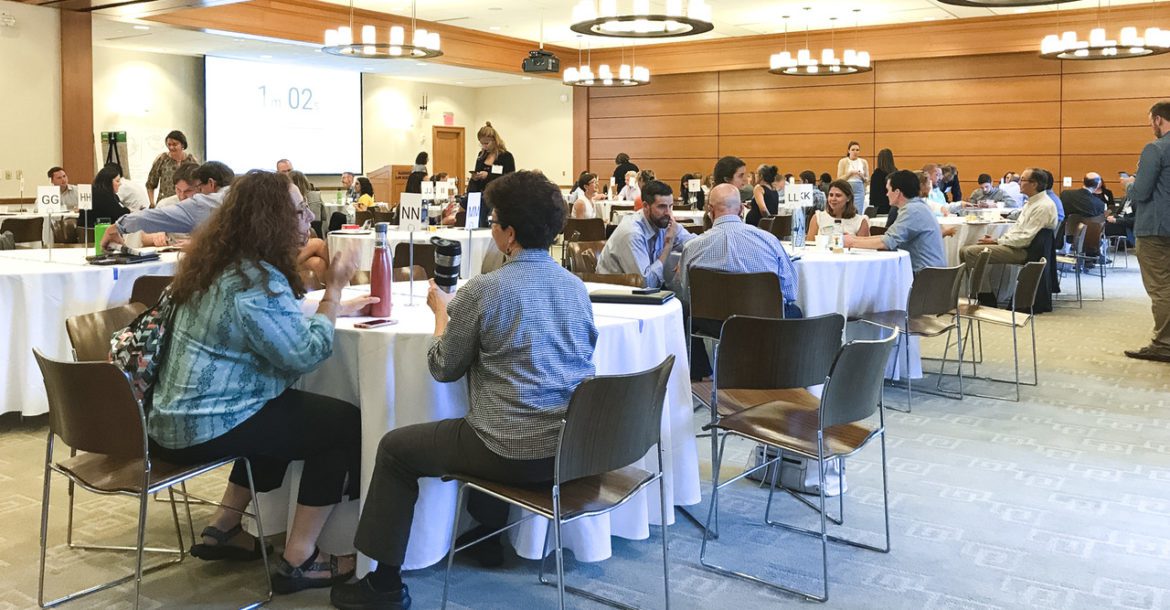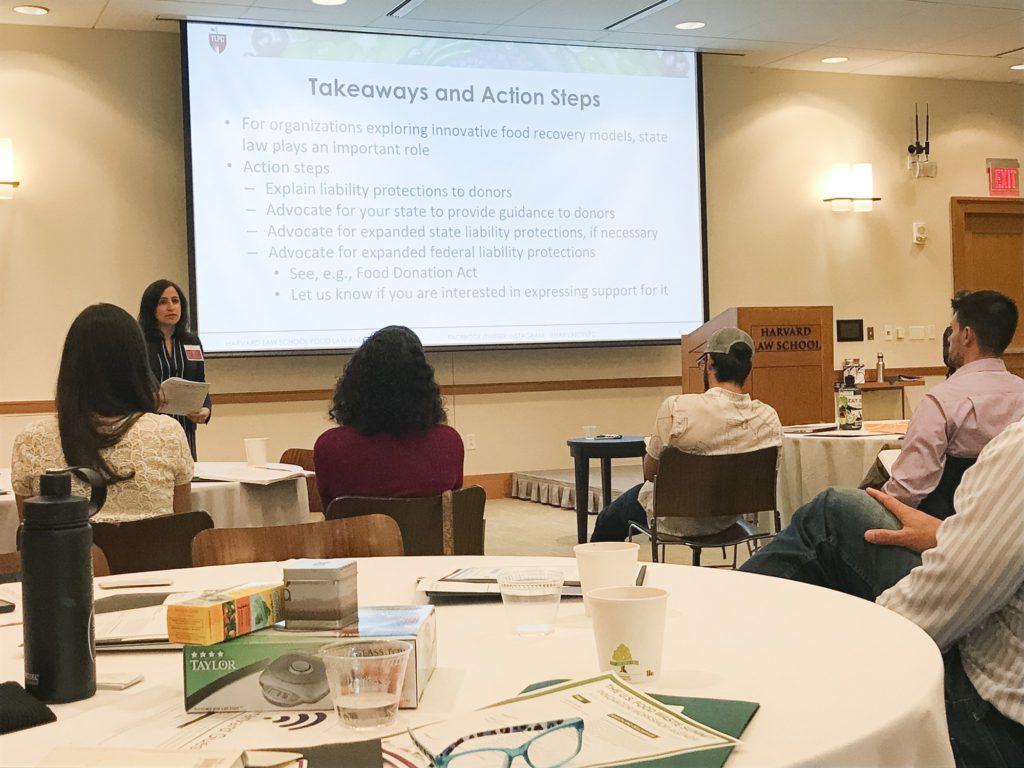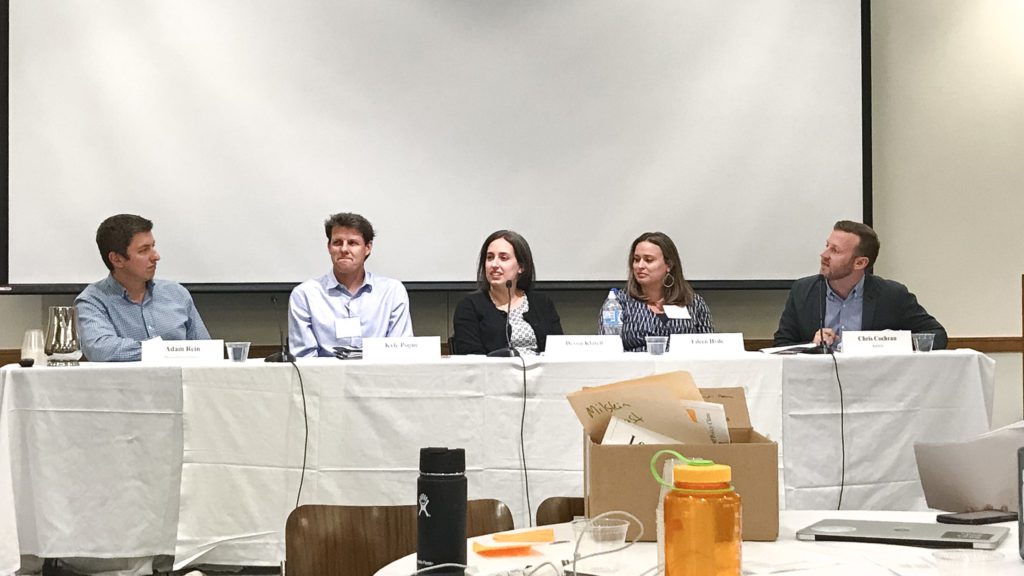
- Knowledge is power
- The Future Of Possible
- Hibs and Ross County fans on final
- Tip of the day: That man again
- Hibs and Ross County fans on final
- Spieth in danger of missing cut
The last week of June held the U.S. Food Waste Summit at Harvard University and was co-hosted by Harvard Food Law and Policy Clinic (HFLPC) and ReFED. 350+ of the best minds in the food waste space right now, all joined together over 3 days. The first day was a workshop for innovators. The second and third days were the main summit event days, full of presentations and panels about what is happening along the food supply chain, in policy, and new innovations related to food waste reduction. There’s a great deal of work to be done to eliminate food waste completely, but the massive efforts currently taking place are moving us in the right direction and are inspiring. Throughout the entire summit, I noticed Three common themes.
2018 U.S. Food Waste Summit: A Personal Takeaway
1. Hope
Ten years ago, food waste wasn’t a conversation we were having collectively. There was not much research on the amount of food wasted globally or the impacts of wasted food. Now, food waste is at the center of conversations in many large corporations, like Walmart, General Mills, Kroger, and Whole Foods. Organizations like the Natural Resources Defence Council (NRDC) have dedicated entire departments to food waste research and started initiatives, like Save the Food, to transform consumer behavior.
Reduction in food waste isn’t just hyped. There are tons of people recognizing the problem and seeking ways to do something about it. With the opportunity of actionable solutions to reduce food waste, technology has been playing a part in supporting the efforts people want to make. Emerging technologies, like Replate’s food rescue platform, make it easy for businesses who want to do the right thing, to actually do it.
Daniel Kurzrock, the co-founder of Regrained, gave an example of how the abundance of smaller organizations in the food waste reduction arena is like “tugboats.” The tugboats are popping up all over the U.S. and pulling larger organizations toward the movement of eliminating food waste.
With the opportunity of actionable solutions to reduce food waste, technology has been playing a part in supporting the efforts people want to make.
2. Minimizing Redundancy
In order to improve efforts of reducing food waste, there has to be an understanding of the food system in its entirety. Without a cohesive understanding of the system, we are creating extra work that could be prevented.
The surplus comes from a problem of mismanagement.
In regard to food recovery specifically, there are many organizations doing similar work all over the United States. This means that the problem of surplus food is not isolated to any region. The surplus comes from a problem of mismanagement. If we are able to reduce the redundancy of many organizations doing similar work across the food system, we have the ability to improve the efficiency of food recovery and create a larger impact. In order to improve recovery, we have to look upstream and improve food distribution.
The entire food system works together but we’ve been looking at many areas of the supply chain as separate parts. If we can create systems to connect production to distribution to the consumer to recovery and back again, we would be better able to direct surplus food to people who need it rather than putting food where it doesn’t belong.

3. Prevention & Source Reduction
The need for education is a major component of reducing food waste on a large scale. Many possible food donations are halted by a lack of knowing the guidelines and regulations. The current guidelines vary from state to state and make it confusing to know what is acceptable to donate in which states. There needs to be consistency across the nation around donation guidelines and a push to educate food distributors.
Above all, we need to prevent food waste before it gets to the recovery stage. That means changing the current way of operating. There is a proposal in California to ban organics from landfill and will need to have another system in place to divert organics elsewhere. This is a huge step in the right direction to prevent organics from going to landfills. According to CalRecycle, “California disposes approximately 30 million tons of waste in landfills each year, of which more than 30 percent could be used for compost or mulch.” Food decomposing in landfills creates methane gas, which is more powerful than carbon dioxide and is one of the top preventable ways to mitigate climate change.

The amazing thing here is that people want to do the work, but there is a gap in knowledge of what to do. Big organizations do care about their impact on the planet and communities. They want to make better efforts to do the right thing. They need to be pointed in the right direction to find the correct information on donation safety and regulation available to prevent food from going to the wrong place.
Ok, now what?
It is becoming clear that the current system with hundreds of food banks across the nation is not solving the problem of food insecurity or surplus food. This point was emphasized by Doug Rauch, who founded Daily Table, a grocery store that utilizes excess wholesome, healthy food items to create grab-n-go meals and grocery items at affordable prices that aims to “address the paradoxical issues of domestic hunger and obesity in America’s inner cities.”
There is a huge opportunity to make bigger impacts in our local and national communities regarding food waste mitigation, but how?
Replate would like to support cohesiveness in the food recovery space. Since there are so many of us doing incredible work, experimenting with a centralized system feels necessary to make the impact and efforts of our work even larger. Other food rescue organizations have similar missions to Replate’s – stop surplus food from not being used and use it to feed people. Perhaps Replate is good at managing businesses’ accounts, MEANS Database can do the matching, Lovin’ Spoonfuls can do the hiring, and FoodConnect, Rescuing Leftover Cuisine can do the rescue. How can we complement each other? We’re not sure what the centralized system looks like yet, but we are open to thoughts, ideas, partnerships, and collaborations.
2018 U.S. Food Waste Summit FAQs
Q1: What is a roadmap to reduce US food waste by 20 percent?
A1: The roadmap to reduce US food waste by 20 percent involves implementing strategies and initiatives across the food system. This includes promoting consumer education, improving food labeling, enhancing food recovery and donation programs, supporting composting and anaerobic digestion, and encouraging sustainable agricultural practices.
Q2: How does food waste affect the environment?
A2: Food waste has significant environmental impacts. When food is wasted, all the resources used in its production, such as water, energy, and land, are also wasted. Additionally, food waste in landfills produces methane, a potent greenhouse gas that contributes to climate change. Food waste also contributes to deforestation, water pollution, and biodiversity loss.
Q3: What is an impactful way to reduce food waste?
Q4: How much does food waste contribute to climate change in the US?
A4: Food waste is a significant contributor to climate change in the US. It is estimated that around 8 percent of greenhouse gas emissions in the country are attributed to food waste. When food decomposes in landfills, it produces methane, which has a much higher warming potential than carbon dioxide. By reducing food waste, we can help mitigate climate change and reduce the carbon footprint of the food system.






